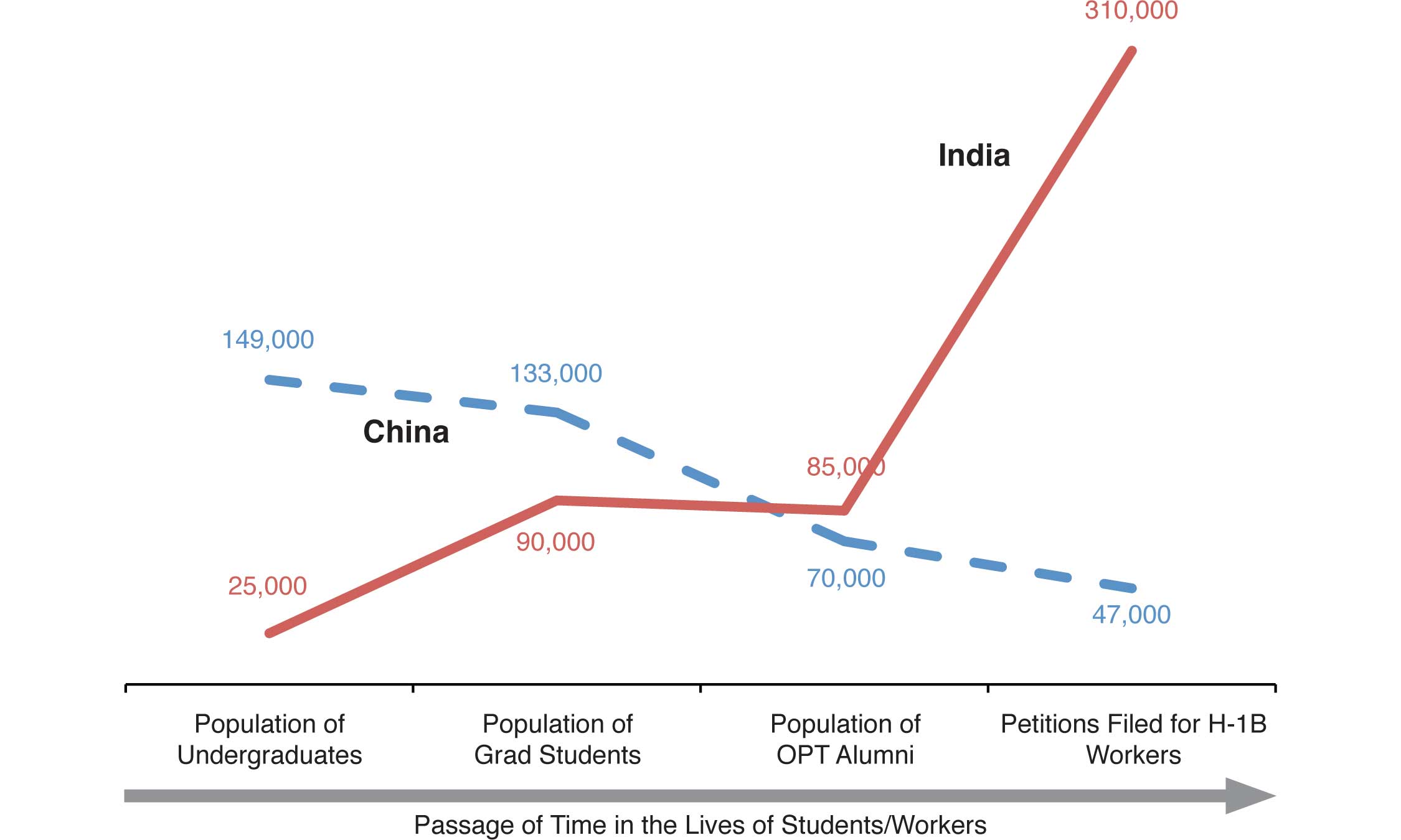China gives Washington fits all the time — trade surpluses, thefts of intellectual property, incursions in the South China Sea, relations with rogue states, etc. — but India rarely makes our front pages.
Further, we keep encountering Chinese citizens endangering our national security, but people from India do not seem to be creating similar problems.
On the other hand — bearing in mind that China and India send us more foreign students than all other nations — the ones from China generally get their educations here and then go home, while those from India linger in our labor markets depriving hundreds of thousands of U.S. workers of high-tech jobs.
While the Trump administration is constantly jousting with China, and is helping the soy bean farmers hurt in those trade wars, there have been no similar efforts regarding what Indian workers are doing to the American labor market.
This distinction between the impact of the workers from India and China is not a nuanced one — the numbers are quite different.
It is useful to note that many students go through three or four phases in the transition from being an alien in their home countries to being H-1B workers here; many H-1B workers have not gone through the pattern outlined below, of course, but the pattern noted is significant nevertheless.
The phases are, in sequence: undergraduate study in this country, graduate study here, work in the government-subsidized Optional Practical Training program, and then much longer work periods as an H-1B high-tech nonimmigrant worker.
The pattern we see in the figure below for India is a small number of undergraduates here, a larger number of grad students and OPT workers, and then a much larger number of H-1Bs, some of whom were educated in India.
Foreign Students and Foreign
|
 |
|
Sources: For undergraduates, grad students, and OPT: "Leading Places of Origin Fact Sheets", Institute of International Education, 2019; for H-1B: "H-1B Petitions by Gender and Country of Birth, Fiscal Year 2018", U.S. Citizenship and Immigration Services, 2018. Note: All of the China/India comparisons are apple/apples in nature. The population figures for undergraduates, grad students, and OPT are approximately accurate, but they are not comparable with the data for H-1B. The latter is workload data and understates the total population of H-1B workers by a margin of 2.5 or 2.0 to one, but this is true for both of the H-1B workforces from the two nations. |
For the Chinese, the pattern is the reverse, about six times as many undergraduates as from India, a slightly larger number of grad students, fewer OPTs than from India, and then about a sixth as many H-1B workers when compared to India.
There are several reasons for these divergent patterns; perhaps the most important is that the Chinese have more to go home to — theirs is a larger and faster growing economy than the one in India.
Further, there is nothing known to me on the Chinese scene comparable to the big Indian outsourcing companies that hire, and then rent out, high-tech workers to U.S. corporations.
These companies (Infosys, Tata, etc.) are not only mostly South India-based, they have a long record of open discrimination in favor of young Indian males from the southern parts of that nation.
Then there is the language of instruction, often English in India, rarely in China. For about a decade, I spent a lot of time as a volunteer every spring at the University of Maryland helping foreign grad students with their income tax filings. Most were from one of these two countries, and the difference in English-speaking abilities of academic equals — all had been accepted at a high-standards university — was remarkable. India was governed by the Brits for nearly two centuries before independence; most of China (Hong Kong being the exception) had no such experience.
It would be helpful if the administration spent a little time coping with the massive overuse of the H-1B program. That would increase incomes in this country and there is no way that India could retaliate.
The figure seems to suggest that most of the Chinese working as H-1Bs probably have U.S. educations, while most of the Indians, similarly employed, were trained in India.
